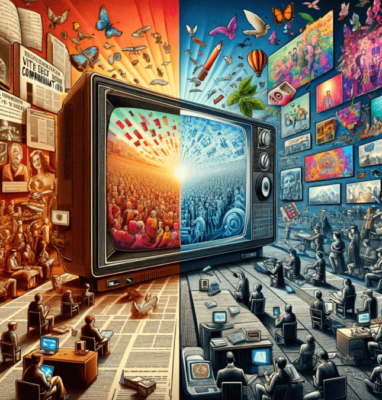The AI-Driven Shift from Text to Video
Last updated: 26 February 2024

We’re witnessing a significant shift from text-based content to video, a change that’s being accelerated by advancements in AI technology.
The AI Push Towards Video Content
AI technology has made creating and editing video content more accessible and efficient than ever before. With tools that automate editing, enhance video quality, and even generate and translate content, AI is lowering the barriers to video production. This democratization means that more of us can share our stories and ideas.
Changing How We Consume Information
The shift towards video isn’t just about production; it’s also changing our consumption habits. AI algorithms are increasingly curating our feeds, recommending video content that aligns with our interests and viewing patterns. This personalized approach is making video content more appealing and relevant, drawing us deeper into the world of visual storytelling.
The Power of Video in Communication
Video has a unique ability to convey emotion, context, and nuance, making it a powerful tool for communication. As we move away from text, we find that video allows us to express and understand complex ideas more effectively. This shift is particularly evident in fields like education, marketing, and entertainment, where video content can make a more significant impact.
AI and Accessibility in Video Content
AI is also playing a crucial role in making video content more accessible. Features like automated subtitles, language translation, and content summarization are helping to break down language and accessibility barriers, ensuring that video content can be enjoyed and understood by a wider audience.
The Business Implications
For businesses and content creators, the shift to video driven by AI, opens new opportunities for engagement and monetization. Video content often has higher engagement rates and offers more opportunities for creative monetization strategies, such as sponsored content, advertisements, and paid subscriptions.
Looking Ahead
The future of content is being shaped by AI’s influence on video. As we continue to embrace these changes, we’re not just witnesses but active participants in this exciting transition. The shift from text to video, propelled by AI, is not just a trend; it’s a fundamental change in how we communicate, learn, and entertain ourselves. Let’s continue to explore and contribute to this dynamic world of AI-driven video content!




